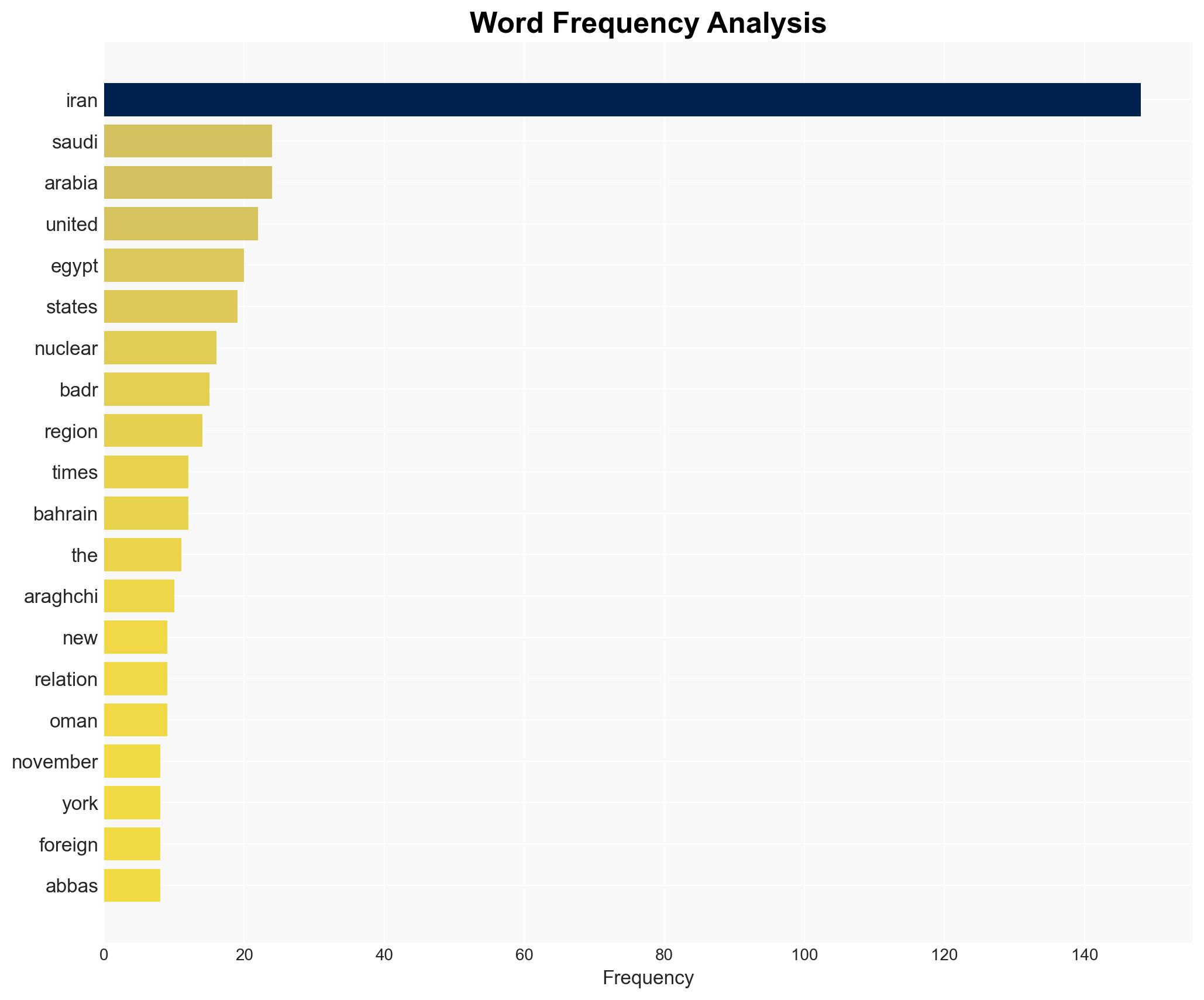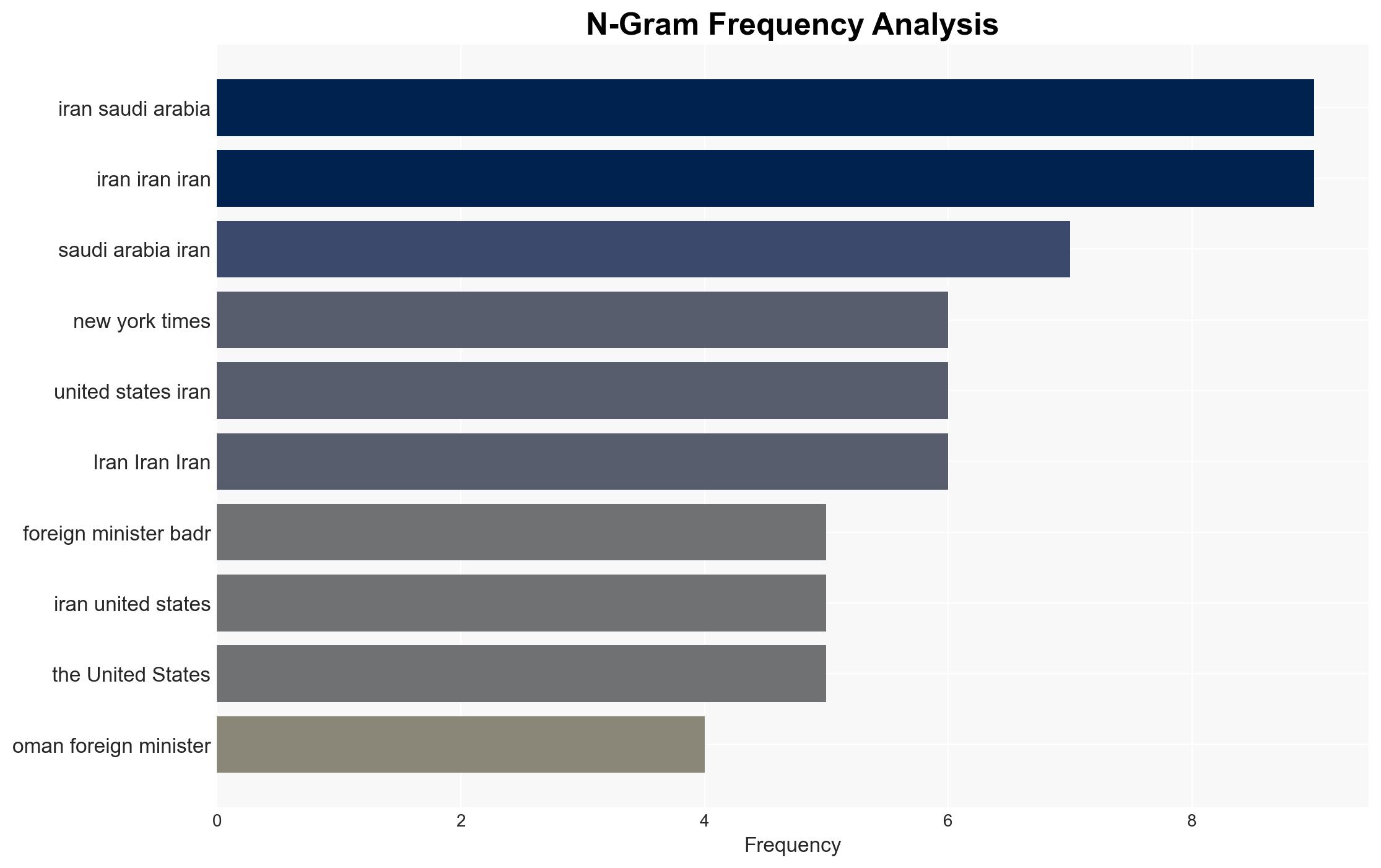Iran Three Things The New York Times Gets Wrong – Antiwar.com
Published on: 2025-11-17
AI-powered OSINT brief from verified open sources. Automated NLP signal extraction with human verification. See our Methodology and Why WorldWideWatchers.
Intelligence Report:
1. BLUF (Bottom Line Up Front)
With a moderate confidence level, the most supported hypothesis is that Iran is strategically reintegrating into the regional political landscape, leveraging diplomatic engagements to reduce isolation. This shift could alter regional power dynamics, necessitating a recalibration of U.S. foreign policy in the Middle East. Recommended action includes enhancing diplomatic channels with regional powers and monitoring Iran’s engagements to anticipate shifts in alliances.
2. Competing Hypotheses
Hypothesis 1: Iran is successfully reintegrating into the regional political framework, reducing its isolation through strategic diplomacy with key regional players like Saudi Arabia, Egypt, and Bahrain.
Hypothesis 2: The apparent reintegration is superficial, with underlying tensions and distrust persisting, potentially leading to instability and conflict in the region.
Hypothesis 1 is more likely due to tangible diplomatic engagements and agreements, such as the China-brokered Saudi-Iran agreement and renewed dialogues with Bahrain and Egypt. However, ongoing distrust and historical rivalries suggest that Hypothesis 2 cannot be entirely dismissed.
3. Key Assumptions and Red Flags
Assumptions include the genuine intent of regional powers to engage with Iran and the sustainability of these diplomatic efforts. Red flags include potential deception by Iran to gain strategic advantages and the possibility that these engagements are tactical rather than strategic, aimed at short-term gains.
4. Implications and Strategic Risks
The reintegration of Iran could shift regional alliances, potentially weakening U.S. influence. There is a risk of cascading political and economic shifts, with countries like Saudi Arabia and Egypt recalibrating their foreign policies. Cyber and informational threats could emerge as Iran seeks to assert its influence. Escalation scenarios include renewed tensions if diplomatic efforts falter or are perceived as insincere.
5. Recommendations and Outlook
- Enhance diplomatic engagement with regional powers to understand their perspectives and intentions regarding Iran.
- Monitor Iran’s diplomatic activities closely to anticipate shifts in regional alliances.
- Encourage confidence-building measures among regional players to mitigate risks of conflict.
- Best-case scenario: Iran’s reintegration leads to regional stability and reduced tensions.
- Worst-case scenario: Superficial engagements unravel, leading to renewed hostilities and regional instability.
- Most-likely scenario: A cautious and gradual reintegration with persistent underlying tensions.
6. Key Individuals and Entities
Abbas Araghchi, King Hamad bin Isa Al Khalifa, Badr Abdelatty, President El-Sisi, Badr Al Busaidi, Trita Parsi.
7. Thematic Tags
Regional Focus, Regional Focus: Middle East, Iran, Saudi Arabia, Egypt, Bahrain, Diplomatic Relations, U.S. Foreign Policy
Structured Analytic Techniques Applied
- Causal Layered Analysis (CLA): Analyze events across surface happenings, systems, worldviews, and myths.
- Cross-Impact Simulation: Model ripple effects across neighboring states, conflicts, or economic dependencies.
- Scenario Generation: Explore divergent futures under varying assumptions to identify plausible paths.
Explore more:
Regional Focus Briefs ·
Daily Summary ·
Support us
·





